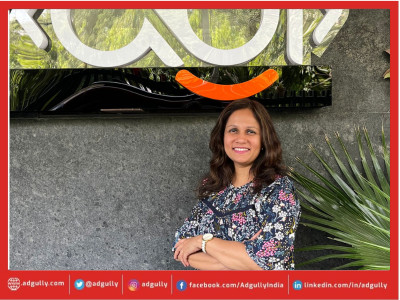Is it time to Flip the Mart?
Even as consumers in large metros are opting for online retail and e-commerce for most of their purchases, the trend is steadily penetrating in non-metro cities as well. The key to creating an effective omni-channel strategy would determine how customers interact with the brand at each step of the customer journey, says Shweta Sharma, Chief of Business Operations, EBUX at AdGlobal360.
The 21stcentury is an era of digitisation, where everything is available online – from groceries to gadgets. This trend can be seen more than ever in the Indian market place, which is rapidly expanding, spurred by healthier disposable incomes and larger customer bases. Consumers today are recognising the benefits of digitisation and asking for more personalised dominion. While consumers in large metros are opting for online retail and e-commerce for most of their purchases, the trend is steadily penetrating in non-metro cities as well. Customers are becoming more demanding and discerning and marketers are being compelled to understand them in greater detail than ever – right from their media consumption habits, through to key influencers in their purchase decision making, to post purchase behaviour.
Internet penetration in the country has grown impressively over the last decade, touching 500 million at the end of 2017, and estimated to touch 730 million by 2020 (Report from the Internet and Mobile Association of India and market research firm Kantar IMRB). Shopping online on apps is becoming a new-age trend in the Indian market. According to a recent survey by performance marketing technology company Criteo, about 74 per cent of Indian participants in the survey stated they have installed two to five retail and shopping apps on their smartphones. Both traditional offline media such as print, television, radio and out-of-home, as well as digital and online channels, continue to grow, with digital growing the fastest among all channels. As customer’s media consumption habits have evolved, brands have followed suit, and have had to adapt to ensure they continue to get the customers’ attention to relate their stories to them effectively.
As per Gartner’s CMO Spend Survey 2017, as many as 98 per cent of marketers feel that online and offline marketing are merging. Marketers who apply different lenses to these disciplines fail to leverage the best that both worlds together can make possible, and end up providing a fragmented, confused brand experience to their customers, thereby ceding their competitive edge. The choice of media or channels flows from the campaignand is not the moot point. The message is more important than the medium, and everything follows from the central message of the campaign. The integrated campaign will then flow seamlessly across the online and offline channels that the marketer has chosen to deploy.
Riding on the back of rising Internet penetration and increasing broadband speeds, successful businesses have been able to tap into an open commerce marketing ecosystem and using technology and data analytics to help shoppers find products of their choice and need along with factors such as e-wallets, fintech apps and improved net banking experiences.
In today’s market, irrespective of preferences towards online and offline stores, it is becoming extremely important for businesses to evaluate the need for a (online & offline) multi-channel strategy for their operations and customer engagement and marketing execution to ensure that customers view the brand consistently across channels.
While a lot of action has already been witnessed in offline businesses moving to the online world, the phenomenon of online businesses supplementing their operations through offline channels is relatively recent; this is unfolding at a very rapid clip.
As online businesses attain scale and reach, there are several factors that may dictate the need for multi-channel business operations to be evaluated. The need for proximity to the customer to enhance brand awareness, providing customers multiple interfaces to engage with the business, enhancing human contact, and fulfilling customers’ need to touch and feel products – especially for large ticket, non-impulse purchases – before making their buy decisions, are some important customer-centric reasons that may spur online businesses to take the enhanced offline presence route for continued business success.
To the businesses themselves, there are other significant pluses – opportunity to combat increased competition for online sales, ability to bring themselves closer to their customers, improving their brand value, simplifying their logistics operations, expanding into new geographies – Tier 2/ 3/ 4 towns & cities – hitherto not seeing traction online, and the chance to effect improvement in their sales conversions if they get their offline format and customer experience approach right. Besides having a presence in the physical world lends a fair amount of credibility to businesses in the eyes of the customer.
Initially, some online-only businesses are choosing to use their offline presence to provide a more wholesome customer experience, and not focusing on sales or conversions. As customers get to fully experience the brand’s products through touch and feel, they feel more comfortable with the brand and its products and are better placed to take a buy decision in an informed manner. Getting the customers to interact and engage with the brand is a reward in itself, and should this go well, conversions and sales should follow.
Since the online channel for sales is still a work-in-progress in the country, there is only so much leverage that online-only presence provides for a brand to relate its story to its target segment in an effective manner. While brands may start with online-only, other channels need to exert themselves to bolster and grow the brand.
Xiaomi, for example, started as an online business. Even today, more than 90 per cent of its sales in India come from online channels. It realised that it was receiving healthy interest and sales from Tier 2 and 3 markets and chose to increase its focus on sales through offline channels to further increase its presence and penetration in these markets. It has set itself a target of 50 per cent of total India sales from offline channels in the short term.
In today’s world, the ability to engage with and influence customers throughout their journey is paramount for continued success. Online and offline behaviours of customers feed into each other, affecting their overall customer journey. Especially for major purchases, buyers like to research across channels to validate their choices. By restricting themselves to a single or limited number of channels, brands and marketers will miss out on providing their customers the seamless brand experience they deserve and desire, and thereby the opportunity to make a sale.
The number of connected devices will only continue to grow, and the ways in which customers engage with brands will continue to increase. Therefore, businesses will need to start thinking in a more holistic manner about their target customers’ experience in this seamless offline-online world.
Customers’ online activity will further evolve, but they will still live in the physical, offline world. Their interaction with the world will continue to be through both the online and the offline channels, and therefore, they prefer to be reached through both. Brands and marketers will do well to realise this truth to create a lasting competitive advantage.
As competition in the online world starts to heat up, the customer starts to have greater bargaining power in their relationship with brands, and brand loyalty takes a hit. It is imperative for online-only businesses to seriously consider the move to add offline presence for enhanced brand connect and improved patronage and sales conversions, before rejecting it outright.
The omni-channel approach not only gives the consumer an option to shop at the store, but also gives him the convenience to shop anytime anywhere. The evident shift towards an omni-channel strategy not only assists retailers to re-think their business strategy to tap the best of both worlds, but also maximise footfalls. The key to creating an effective omni-channel strategy would determine how your customers interact with your brand at each step of the customer journey.

















Share
Facebook
YouTube
Tweet
Twitter
LinkedIn